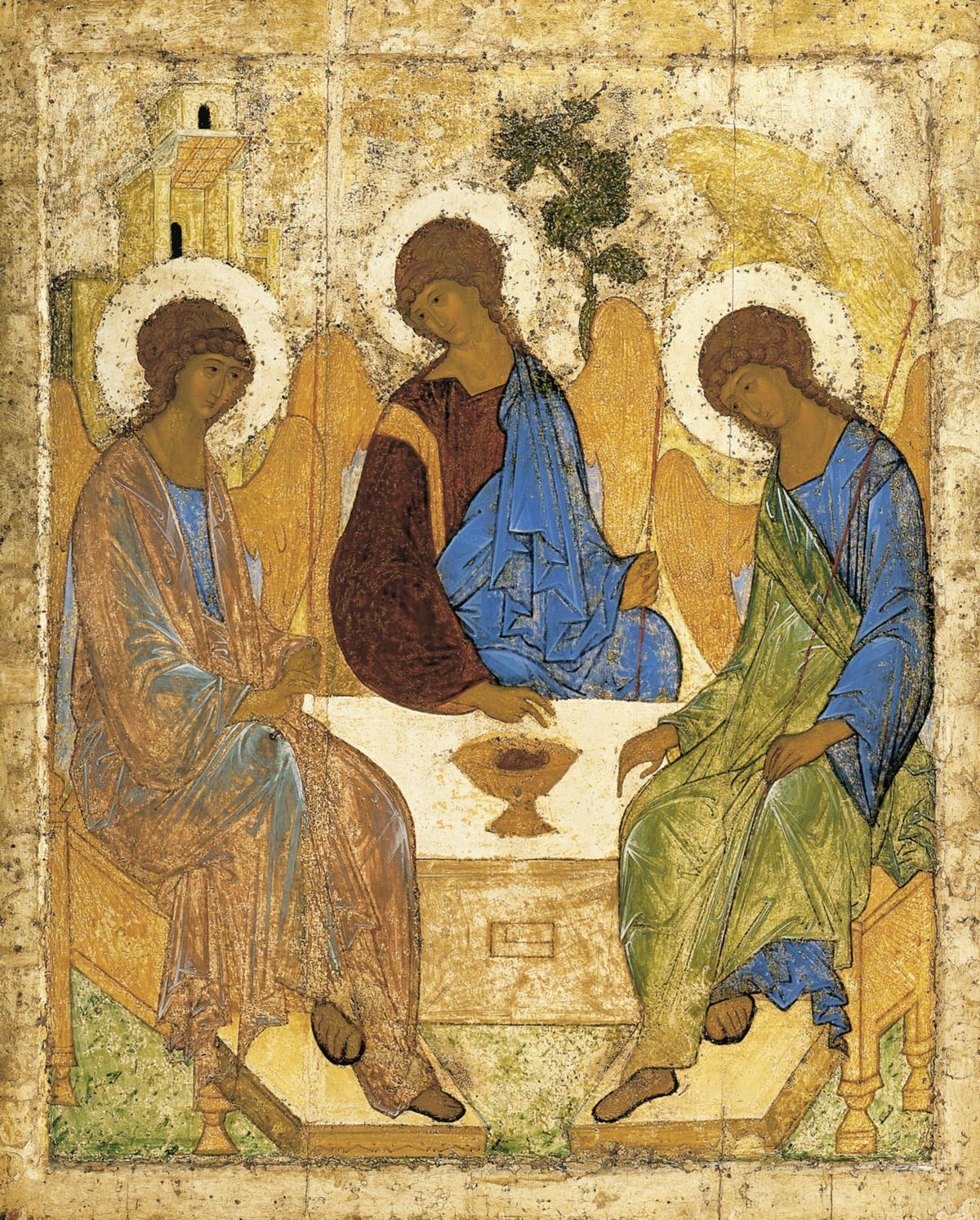On Friday, days after a transcript emerged detailing objections by restorers at the State Tretyakov Gallery to the transfer of Andrei Rublev’s 15th-century Trinity icon to the Russian Orthodox Church, President Vladimir Putin’s spokesman confirmed that Russia’s most famous work of art will be moved to Moscow’s Christ the Savior Cathedral in time for Pentecost services on 4 June.
The experts cited the “complex and unstable state” of Russia’s most famous work of art “as well as the unpredictability of the ongoing process of negative changes” that resulted after it was briefly moved from the museum for religious veneration last year.
The Russian Orthodox Church announced on 15 May that the icon is being returned by President Vladimir Putin for permanent use by the church. Patriarch Kirill I, the head of the church, later told bishops that he had simply requested that it be released for 4 June Pentecost services. Putin’s spokesman, Dmitry Peskov, confirmed the return of the icon at the time, but it has been shrouded in mystery since Putin has not commented nor has a decree been published.
Peskov’s comments to journalists on Friday were much more specific.
“A plan has been agreed according to which the icon will be moved to the Cathedral of Christ the Savior in compliance with all necessary measures to ensure its safety in its current state,” he said according to Radio Mayak, and “a group of specialists will already make a decision on its further restoration, which will begin after a certain period.”
Patriarch Kirill, who has been calling for years for the return of religious treasures that had been seized and transferred to museums in the early years of Soviet rule, has been a vocal supporter of Russia’s 2022 invasion of Ukraine. The return of the Trinity icon has been interpreted as a reward for loyalty and a superstitious insurance policy for the Kremlin in anticipation of Ukraine’s counteroffensive.
Restorers’ concerns were raised at a gathering of the Tretyakov’s restoration council held on 15 May in response to a culture ministry query on whether it is technically possible to transfer the Trinity for Pentecost given its state.
According to a transcript of the meeting, the restorers noted that five areas of damaged paint on the icon “require urgent restoration strengthening” and a crack has increased on the face and figure of one of the angels following its return from several days at the Trinity Lavra of St. Sergius near Moscow last July.
Meanwhile, Elena Pronicheva, the director of the Tretyakov, whose father had served as a top official of the Federal Security Service under Putin, is quoted as saying that “the icon should in the short term be in a state of rest” so as to study the consequences of its 2022 journey.
Archpriest Leonid Kalinin, who chairs the Expert Council on Church Art, Architecture and Restoration of the Russian Orthodox Church grilled the restorers about climate control at the museum and during the transport of the icon, suggesting they were to blame for not protecting it. He also told the gathering that “if a political decision will be made by the leadership” the museum will have no choice but to “bring out” the icon.
Earlier this week, Father Kalinin, who was trained as an artist before he became a priest, told RBC, a Russian news publication, that the Trinity must return to the cathedral at the Lavra for which Rublev originally created it.
“The number of secular tourists, both ours and those from abroad, visiting the Trinity Cathedral of the Trinity-Sergius Lavra, is approximately equal to the number of tourists visiting the Tretyakov Gallery,” he told the publication. “And it will be available to everyone—believers and non-believers, and being in its own home, in its sacred temple atmosphere, will be able to leave an even greater response in the hearts of people.”
Peskov, Putin’s spokesman, said on Wednesday that the Kremlin “will be clarifying details” about the state of the icon.
Mikhail Mindlin, the director of the Central Andrei Rublev Museum of Ancient Russian Culture and Art in Moscow, offered to loan one of the museum’s copies of the Trinity to the church until a high-tech capsule is created to protect the original.


